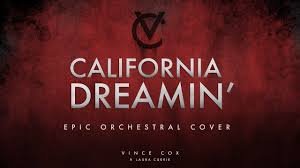
tiny dancer lyrics
Elton John’s Tiny Dancer is one of the most celebrated and enduring songs in modern pop culture. Released in 1971 on his album Madman Across the Water, it became an instant classic. Written by Bernie Taupin, the song quickly captured the attention of audiences worldwide, and remains a cultural touchstone even decades after its release. The song’s deep connection with California, rock and roll, and the free-spirited lifestyle of the 1970s has ensured that it endures to this day.
In this article, we will explore the meaning behind the lyrics of Tiny Dancer, the collaboration between Elton John and Bernie Taupin, its cultural significance, and how the song captured the essence of 1970s California.
The Birth of “Tiny Dancer”
“Tiny Dancer” was born during the early 1970s when Bernie Taupin visited Los Angeles. At that time, Los Angeles was emerging as a center of artistic and cultural revolution, and Taupin was captivated by the bohemian lifestyle, the music scene, and the overall laid-back atmosphere of the city. It was here that he observed the California girls, particularly the ones involved in the vibrant music scene of Los Angeles, which inspired the lyrics for Tiny Dancer.
Taupin himself has spoken about how he wrote the song after spending time with people who were part of this artistic and free-spirited world in California. He noted that the “Tiny Dancer” is not about any one specific person, but more of a general reflection of the women he met and observed during his time there. These women were seen as integral parts of the growing music scene in Los Angeles, but they were also symbolic of the broader cultural shifts happening in society at the time. The song presents an idealized view of a young woman who embodies the energy, freedom, and beauty of the era.
In an interview, Taupin explained that the “Tiny Dancer” wasn’t a specific person but rather a representation of the many women he saw in Los Angeles who embodied the carefree spirit of the time. The song paints a picture of a young woman, possibly part of the hippie movement, living a life of freedom, expression, and adventure. The “Tiny Dancer” is symbolic of a new generation that was unafraid to embrace their individuality. She is someone who belongs to the world of music and creativity, someone who is deeply connected to the pulse of the moment.
The Meaning Behind the Lyrics
At its core, Tiny Dancer is a tribute to the youthful energy and artistic freedom of California during the 1970s. The song’s lyrics evoke vivid imagery of a carefree existence where people are free from societal constraints, and love, beauty, and art flourish.
The line “Blue-jean baby, L.A. lady, seamstress for the band” is a clear nod to the California lifestyle. Here, Bernie Taupin describes a young woman, perhaps someone who is part of the rock and roll scene, helping a band by making clothes or assisting with their performances. This character is symbolic of the free-spirited young women in Los Angeles who were not only part of the social scene but were also contributing to the creative movements of the time.
The phrase “blue-jean baby” captures a sense of youth and rebellion, associated with the relaxed, carefree California culture. Jeans became a symbol of the rebellious youth, especially in the rock and roll scene. They were worn by musicians and fans alike as a sign of breaking away from the norms of the previous generation. The use of “L.A. lady” ties this image specifically to Los Angeles, the center of the 1970s music scene, and to a woman who is part of that environment — someone free, independent, and deeply connected to the world of music.
As the song progresses, Taupin’s lyrics paint a picture of this “Tiny Dancer” as someone who is both innocent and aware of the world around her, and her role in the larger cultural landscape. The line “seamstress for the band” further emphasizes her role as an integral part of the artistic scene — not just as a passive observer but as someone who contributes to the creative energy that drives the world of music and art.
California is a central theme throughout the song. The mention of L.A., the imagery of blue jeans, and the idea of a “seamstress for the band” all tie into the era’s rock and roll scene. Los Angeles, particularly in the 1970s, was a cultural hub for musicians, artists, and dreamers alike, which is reflected in the song’s celebration of youth, beauty, and freedom. The lines are not just about a woman; they are about a cultural moment — a snapshot of an era where music and youth were intertwined in ways that were defining for the culture of the time.
While the song is deeply rooted in the California lifestyle, its themes are universal. It speaks to the desires of youth everywhere — the yearning for freedom, the longing for love, and the pursuit of individuality. The song resonates not only with those who lived through the 1970s but also with generations that came after.
The Influence of California on “Tiny Dancer”
California’s influence on Tiny Dancer cannot be overstated. During the 1970s, Los Angeles was a place where rock and roll was evolving and where cultural boundaries were being pushed. The city’s counterculture movement, which embracedElton John’s Tiny Dancer is one of the most celebrated and enduring songs in modern pop culture. Released in 1971 on his album Madman Across the Water, it b
freedom, creativity, and artistic expression, served as the perfect backdrop for the song’s creation.
In the 1970s, Los Angeles was known for being a melting pot of musical talent, artistic expression, and the rise of new movements that rejected the mainstream conventions of the time. The city was home to bands like The Byrds, Crosby, Stills, Nash & Young, and The Doors, and it became synonymous with the youth-driven rebellion that characterized much of the music and culture of the era. It was in this environment that Elton John and Bernie Taupin wrote Tiny Dancer.
The image of California in the song is one of sunlight, palm trees, and ocean waves, but it’s also about the artistic rebellion of the time. Los Angeles had long been the center of the entertainment world, and during the 1970s, it became the birthplace of many of the era’s most iconic musical movements. This creative atmosphere permeates Tiny Dancer, making it a snapshot of a time when music and youth culture collided in the most remarkable ways.
The song captures a moment in time when Los Angeles was the epicenter of change. The rock and roll culture that was thriving there at the time was about more than just music — it was about an entire way of life, one that rejected the constraints of society in favor of freedom and self-expression. In this light, Tiny Dancer becomes more than just a song about a woman — it’s about a way of life that celebrated personal freedom, creativity, and the pursuit of happiness.
The Role of Elton John and Bernie Taupin
The dynamic between Elton John and Bernie Taupin is one of the key reasons for the success of Tiny Dancer. The two have had one of the most successful songwriting partnerships in the history of popular music. Elton John’s musical genius combined with Bernie Taupin’s poetic lyrics created a synergy that produced timeless songs like Tiny Dancer.
Elton John often speaks about how he works with Bernie Taupin: Taupin writes the lyrics, and then John creates the melody that perfectly complements the emotion and imagery in the words. In the case of Tiny Dancer, the melody mirrors the joy and freedom that the lyrics convey. It’s a perfect example of how lyrics and music can come together to create a masterpiece.
The partnership between Elton John and Bernie Taupin goes beyond simple collaboration — it’s a relationship built on mutual respect and creative vision. Over the years, the two have written numerous songs together, many of which have become pop culture staples. The success of Tiny Dancer is a testament to their ability to create songs that are not only memorable but also resonate deeply with audiences, transcending time and trends.






